Zwift versus TrainerRoad: which indoor cycling training app is right for you?
Whether socially motivated or data-driven, your perfect fit could be one (or both!) of these popular indoor cycling and training platforms


The cycling internet likes lists. Loyal brand followers take any opportunity to tout the virtues of their trusted bike, components, or equipment of choice to see how they stack up against the competition. A quick search for "Shimano vs. Campagnolo" spits out an exhaustive list of lists, and the "Trek vs. Specialized" query is still populating.
Now, "Zwift versus TrainerRoad" is something of an apples-to-oranges comparison: both are indoor training applications, but whereas Zwift offers a gamified experience, TrainerRoad is more clinical and with its focus centered around your physiological performance and its improvement.
But it might be that Zwift’s workouts and training plans are sufficient for your needs - or you might find that TrainerRoad’s training tools are more important to you than the virtual roads of Zwift. You might even decide not to make a choice between the platforms at all, letting TrainerRoad handle your sessions and analyze your data whilst you enjoy yourself bombing round Watopia.
Hopefully by the end of this article you’ll have a clear picture of the qualities and strengths of each platform, and will be able to make an informed decision on what will work best for you. Let’s jump in!
Zwift versus TrainerRoad: History and background
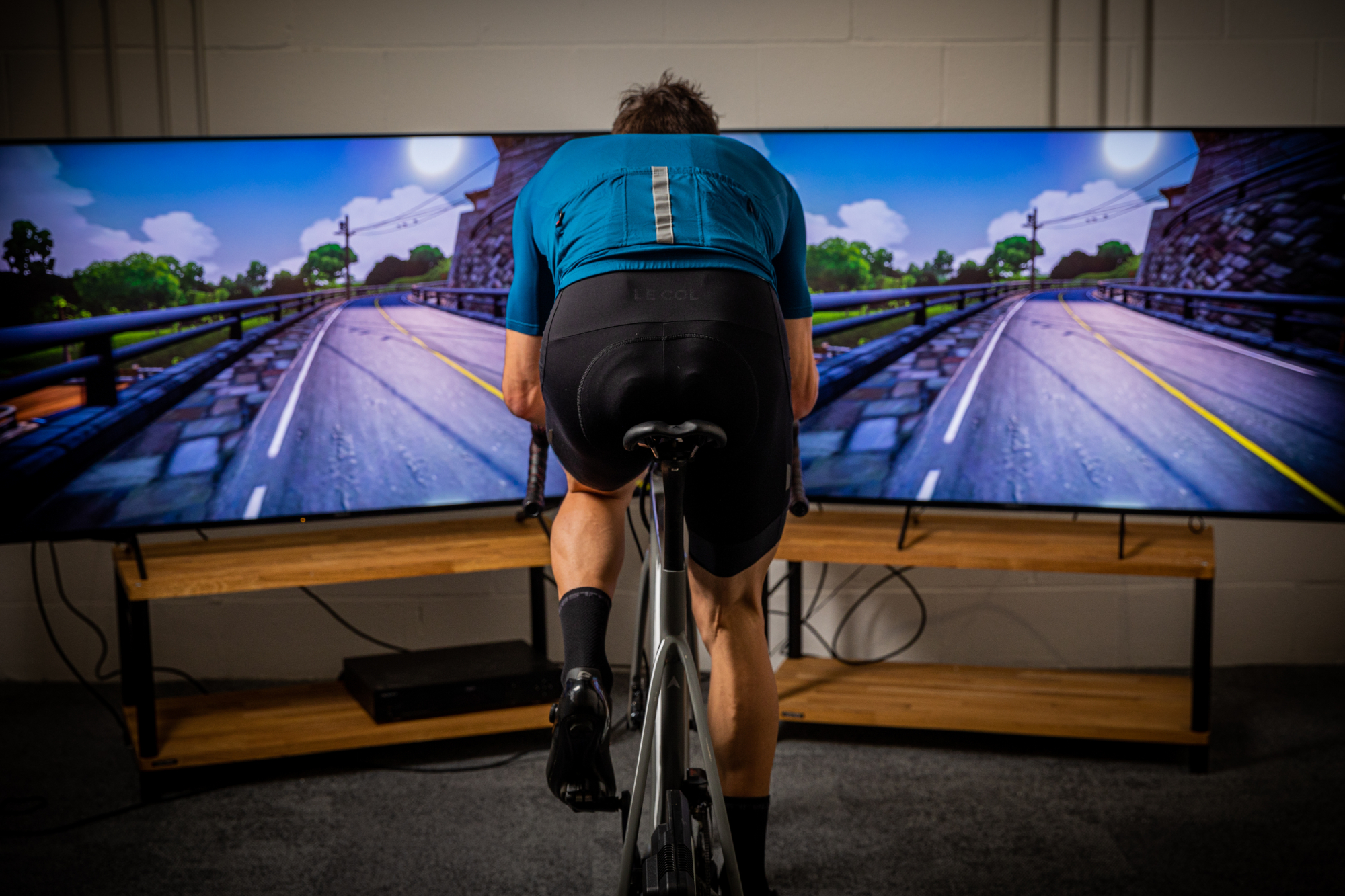
Zwift exploded onto the scene in 2014, quickly amassing a dedicated following under the mantra "Fun is Fast." Indoor cyclists, yearning for a more engaging alternative to outdoor rides, gravitated toward Zwift's virtual world.
By January 2021, at the pandemic's peak, over 43,000 users were navigating Zwift's digital courses simultaneously. However, trying to please everyone can sometimes leave certain users wanting more.
Enter TrainerRoad, a Reno, NV-based company founded in 2012. With 100 employees, this bootstrapped venture offers AI-powered, personalized cycling training that adapts to your cycling goals and schedule. It's the go-to app for cyclists in over 150 countries looking to improve their speed and fitness.
Get The Leadout Newsletter
The latest race content, interviews, features, reviews and expert buying guides, direct to your inbox!
While Zwift appeals to a broad audience with its gamified experience, TrainerRoad attracts a subset of indoor cyclists who prefer a more analytical, structured training approach. This fundamental difference has allowed TrainerRoad to carve out its niche in a market also populated by platforms like Rouvy, Bkool, Wahoo SYSTM (formerly Sufferfest), indieVelo, and MyWhoosh.
Both TrainerRoad and Zwift excel in their respective domains, making the choice between them a matter of personal preference, whether you're a novice indoor cyclist or a seasoned "Indoor Specialist."
Zwift versus TrainerRoad: getting started
Most virtual training platforms, including Zwift and TrainerRoad, offer standard features rooted in real-world cycling and utilize similar technology. The technology ensures seamless computer connectivity and compatibility across all platforms with smart indoor trainers, exercise bikes and smart bikes.
A smart trainer is essential for maximizing your experience on both Zwift and TrainerRoad. Direct-drive indoor trainers come with built-in power meters and variable resistance features. These measure your power output and send it to the app, moving your virtual avatar accordingly.
The variable resistance feature replicates real-world terrains, increasing resistance during climbs and reducing it on descents, making for a more realistic virtual ride. During online workouts, the resistance adjusts based on the cycling training plan parameters.
Zwift and TrainerRoad offer compatibility with iOS, Android, or Windows devices, allowing you to ride or compete with cyclists globally or train at home.
You're ready to ride once your setup is complete and fans, towels, and bidons are in place. While downloading and registering for both apps is straightforward, the subtleties that make each virtual riding experience unique are worth exploring.
Zwift versus TrainerRoad: training
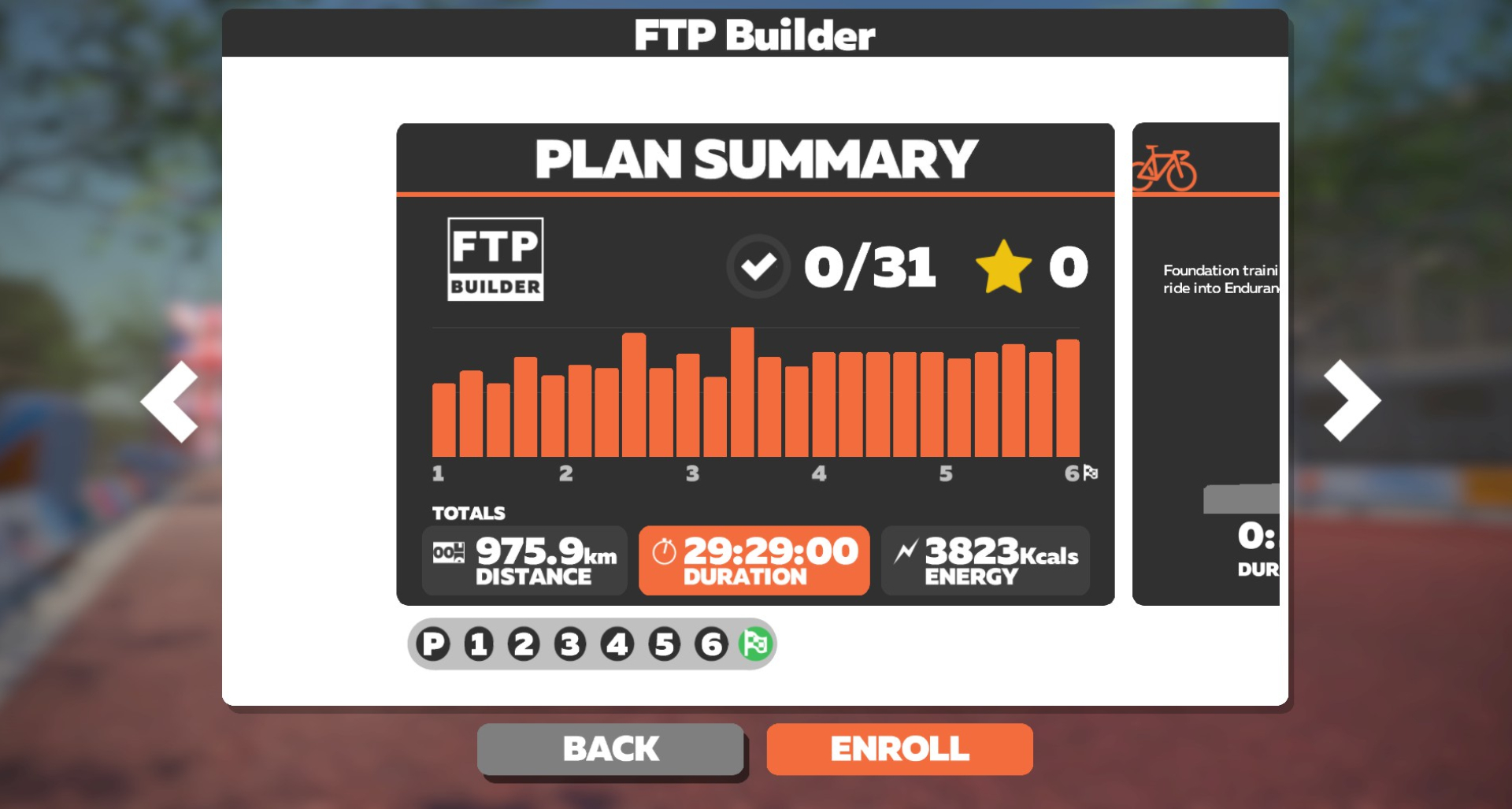
Zwift
Zwift offers a selection of over 1,000 structured workouts and training plans, catering to cyclists of all skill levels. The platform aims to enhance indoor training by providing an immersive experience with on-screen prompts, points, and achievements. The added benefit of training alongside thousands of others in a virtual community, often in group settings, boosts motivation.
For those seeking a personalized approach, Zwift provides a custom workout builder to tailor training to individual needs. The platform also keeps its training resources fresh with regular updates. A recent overhaul of their Workout Library organized the content into 14 streamlined collections, making it easier for riders to find workouts that align with their goals.
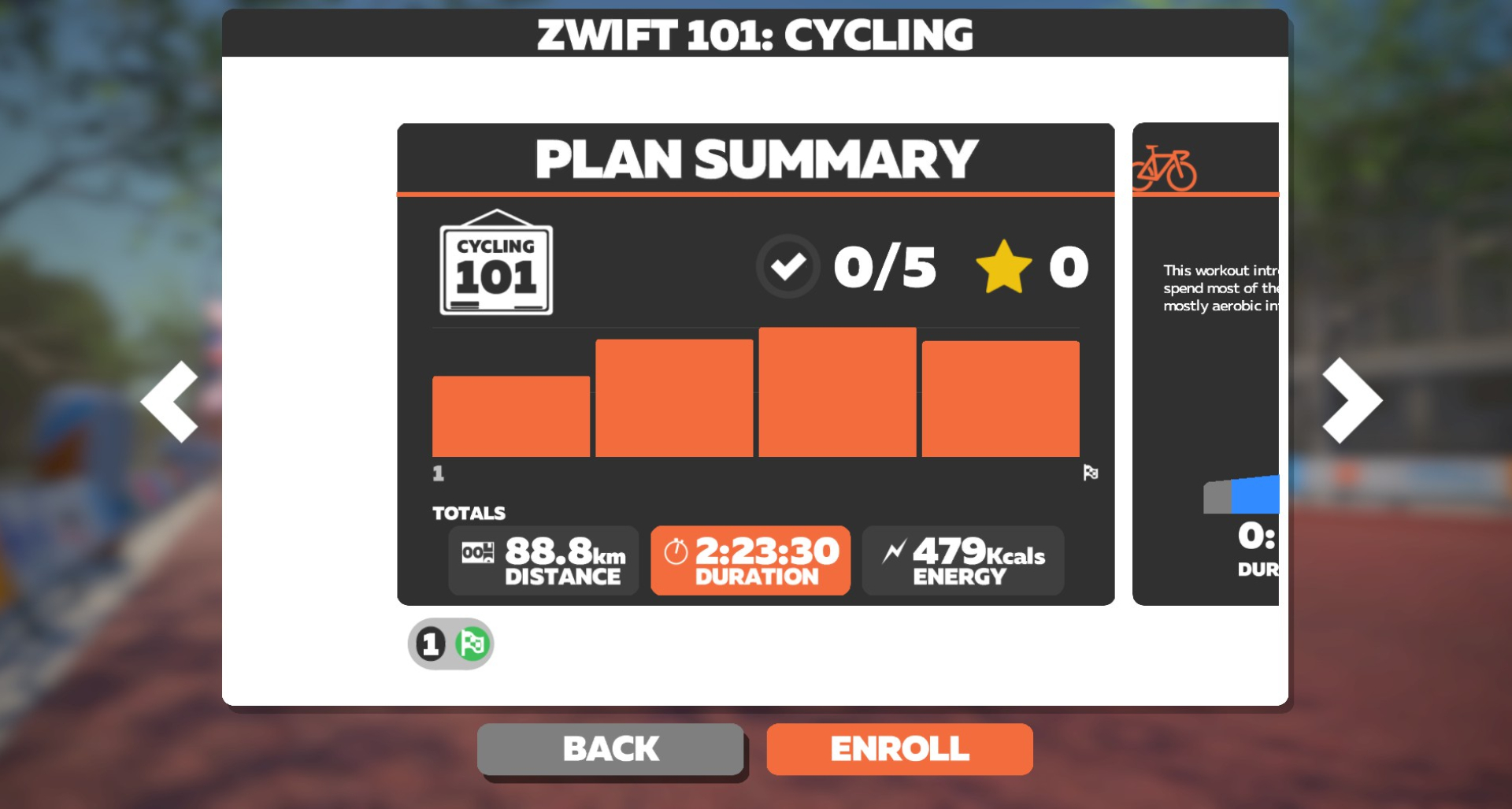
There are 15 cycling training plans to choose from, like Zwift: 101, Zwift Racing, FTP Builder, and Gran Fondo, with flexibility and a goal-oriented approach. Zwift also has eight Zwift training plans for the runners on the platform, including programs for 5K, ½ Marathon, Marathon, and Cyclist to 10K.
Despite its beginnings as a training app, Zwift's focus has shifted away, and the gap to TrainerRoad is widening. As the name suggests, training is what TrainerRoad does best, and the platform earns the distinction, making TrainerRoad the standard for online training - which I’ll expand on next.
TrainerRoad
Initiating the training process with TrainerRoad is a straightforward endeavor. First, the rider signs up and syncs their account with Strava or Garmin Connect, then creates a personalized training plan using the Plan Builder.
A key feature of the app is its automated Training Plan Builder. When you sign up and begin using it, the app will ask you to input important information such as your target races for the season, your available training time, and other basic details. Once you've provided this information, the app will generate a customized training program for you.
TrainerRoad offers plans for various types of rides, including road cycling, gravel riding, gran fondos, triathlons, mountain biking, and cyclocross. It also caters to general fitness goals in addition to race-specific objectives.
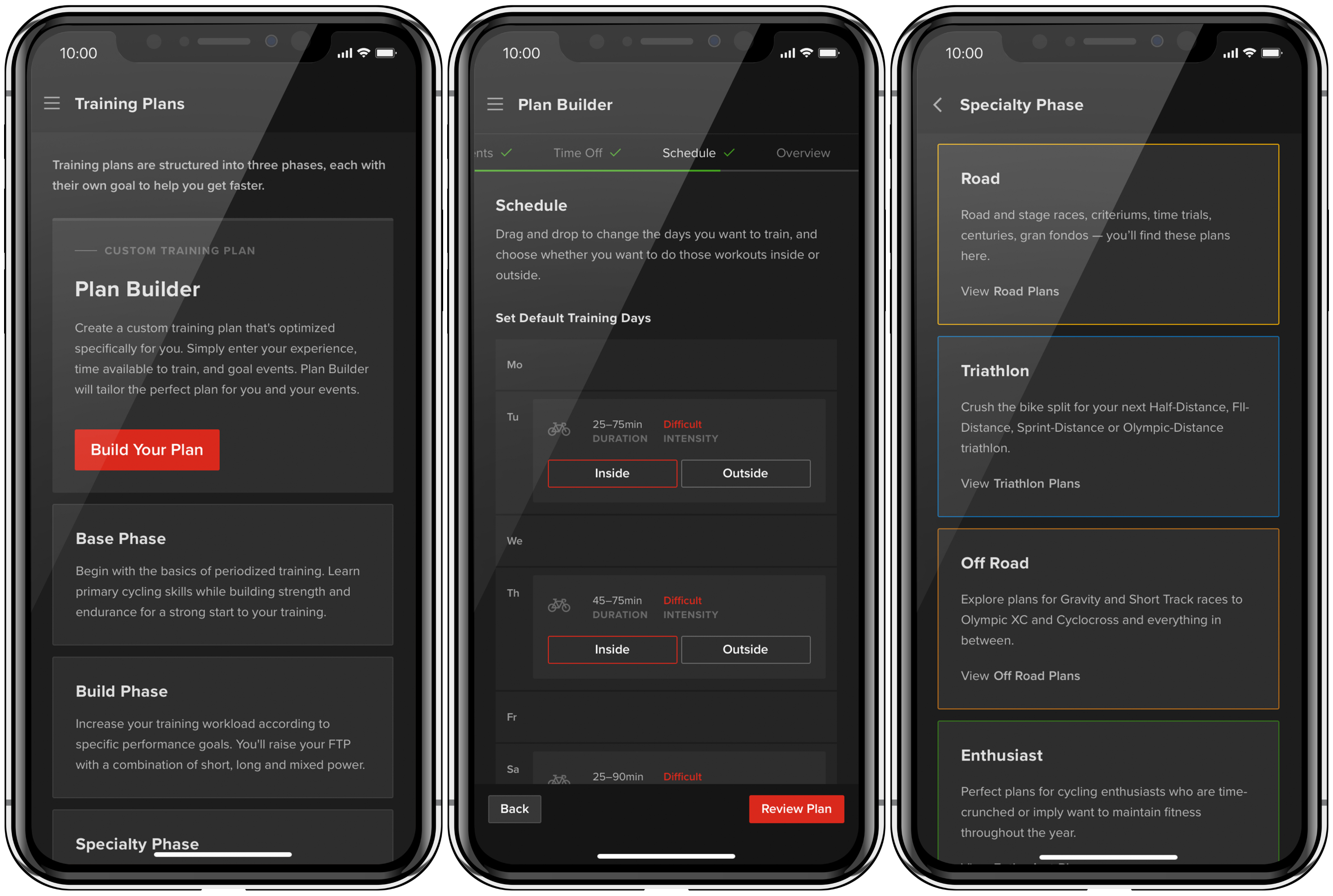
TrainerRoad employs a 5-step Adaptive Training Process to optimize an athlete's cycling performance. The athlete trains using the app on their device for indoor sessions or with compatible hardware like Garmin and Wahoo units for outdoor activities.
After each session, the AI analyzes the athlete's performance, considering both achieved power targets and subjective feedback on how the workout felt. The app prompts post-workout surveys, and Adaptive Training uses the data collected to adjust upcoming training sessions for the athlete.
Based on this analysis, the athlete's Progression Levels are updated to reflect current abilities in different training zones. Subsequent workouts are then adapted to align with these updated levels, ensuring the athlete is constantly engaged in the most effective training.
Within your TrainerRoad dashboard, the calendar view feature is readily accessible. It allows you to view your upcoming workouts and offers the flexibility to adjust your schedule when necessary due to life's demands.
TrainerRoad's AI FTP Detection requires ten initial indoor rides for activation. Its data-driven method analyzes a wealth of athlete data to identify changes in Functional Threshold Power (FTP) without the need for exhaustive tests. The tool allows for accurate performance assessment even during endurance sessions, making it a standout feature for new and experienced cyclists who have a bad relationship with dreaded FTP fitness testing.
As time progresses, Adaptive Training calibrates to gain a deeper understanding of the athlete, enhancing the training regimen's effectiveness. TrainerRoad provides an all-in-one training alternative that evolves with the athlete, making it the final destination for many cyclists' training option search.
Zwift versus TrainerRoad: virtual riding

Zwift excels in the virtual riding realm by focusing on user experience rather than photorealistic graphics. The platform prioritizes a unique virtual world that is smooth, intuitive, and compatible with a range of hardware. This approach sets Zwift apart from its competitors.
The platform offers over 100 routes and numerous scheduled group rides in its fictional worlds. Users can also join one of the nine popular Zwift Robopacers, which offer set paces to suit everyone from beginners to experts.
There is no virtual riding on TrainerRoad.
Zwift versus TrainerRoad: competition and racing
Zwift has been a trailblazer in cycling esports, hosting elite events like the UCI Cycling Esports World Championships and the Virtual Tour de France. It also expanded the sport's reach through partnerships with major broadcasters like Eurosport and NBC Sports Gold. The platform's elite racing series, the Zwift Grand Prix, offers a $100,000 prize pool.
Amateur racing is also on the rise, with Zwift seeing a 10-20% annual growth in competitive users. Races average 360 participants at peak times, and over 1,200 races are organized weekly by more than 500 individuals. About one-third of all users have participated in at least one race, a 50% increase from previous reports.
The popular Zwift Racing League (ZRL) will break records with 2,000 teams registered for the 2023 indoor season. ZwiftPower, a community-created website, is a vital resource for racers and organizers, offering detailed performance data and race results. For additional race information, users can visit Zwift's official racing page.
TrainerRoad doesn't have racing.
Zwift versus TrainerRoad: social aspects
Zwift and TrainerRoad offer contrasting but complementary experiences, each with unique community engagement strategies. Zwift thrives on its social and community-oriented features, making it a leader in cycling-related social initiatives.
The platform has been instrumental in promoting gender parity through events like the Tour de France Femmes avec Zwift and has a dedicated Diversity, Equity, Inclusion, and Belonging (DEIB) team. This team spearheads various inclusive practices, including the Black Celebration Series and charitable activities.
TrainerRoad, on the other hand, focuses on the essentials of training while allowing riders to bring their own entertainment (BYOE). Riders can engage with other platforms like Zwift or even watch Netflix while TrainerRoad takes care of the training regimen. The TrainerRoad platform offers Group Workouts, where athletes can sync their training sessions and communicate via voice and video, creating a virtual training room experience.
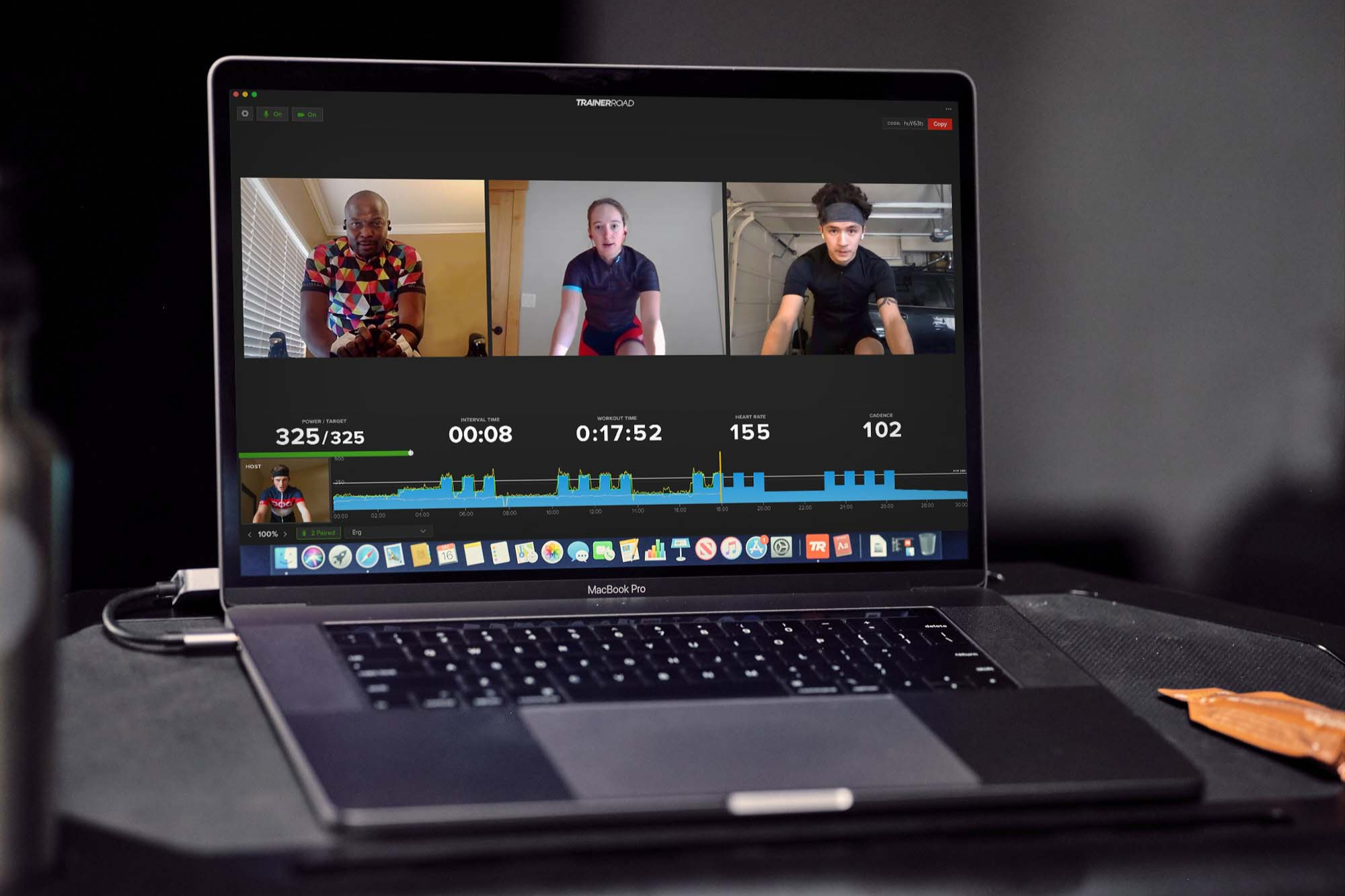
TrainerRoad's customer support staff includes certified coaches and experienced athletes, ensuring that riders receive expert guidance for their training queries.
Zwift versus TrainerRoad: the differences
Zwift and TrainerRoad serve different purposes but can complement each other well. While Zwift offers a virtual world for indoor cycling, TrainerRoad focuses on enhancing cycling performance through AI-driven training. Many Zwift users use both platforms simultaneously, allowing TrainerRoad to control their training regimen while enjoying Zwift's virtual environment.
TrainerRoad boasts a database of over 250 million activities logged by athletes from over 150 countries. Its collection of more than 25 million specific TrainerRoad workouts sets it apart. This "planned vs. actual" data informs the platform's AI and machine learning models, providing unique insights that give TrainerRoad a competitive edge in AI-driven cycling coaching.
On the other hand, Zwift brings a gamified experience to indoor cycling. It offers features like Achievement Badges for completing courses or challenges, in-game equipment choices, and avatar customization. Unique elements like Power Ups and a time trial course with boost pads and obstacles add a video game-like feel to the experience.
Zwift Play, the platform's proprietary game controller hardware, controls these features. Zwift even has its own line of smart trainers, known as the Zwift Hub. Additionally, the Zwift Companion App enhances user engagement by allowing control of the game and social interaction right from a mobile device.
Zwift versus TrainerRoad: the verdict
Zwift and TrainerRoad are the two most popular indoor training and virtual cycling options for a reason. Each achieves its desired goal and does it well.
Ask yourself, are you the focused type of rider who thrives on structure, wants somebody else to take care of the details so they don't have to, but doesn't want to deal with the complexity or cost of working with a coach? If so, then TrainerRoad will likely work for you
Or are you the type motivated by the social side of cycling, who finds value in measuring your fitness against others and enjoys the distraction of gamification? If that’s the case, then Zwift is where you’ll be happiest.
If the answer is yes to both, that’s okay too: Zwift and TrainerRoad can complement each other perfectly.
Zwift is $14.99 / £12.99 per month, and TrainerRoad's Adaptive Training is $19.95 / ~£16 per month or $189 / ~£152 if you pay annually.

Thank you for reading 20 articles this month* Join now for unlimited access
Enjoy your first month for just £1 / $1 / €1
*Read 5 free articles per month without a subscription

Join now for unlimited access
Try first month for just £1 / $1 / €1
A physical therapist with over 25 years of experience, Christopher Schwenker is on a journey to give back to the cycling community for rewarding experiences and fulfilling relationships through the pages of his virtual cycling blog, The Zommunique, and his cycling-related non-profit, The DIRT Dad Fund.
-
 Man hands himself in to Belgian police after throwing full water bottle at Mathieu van der Poel during Paris-Roubaix
Man hands himself in to Belgian police after throwing full water bottle at Mathieu van der Poel during Paris-Roubaix30-year-old was on Templeuve-en-Pévèle cobbled sector when television pictures showed the bottle hitting him in the face
By Tom Thewlis Published
-
 Fizik Vento Omna Wide shoe review: Yeti sneakers for those pedalling on a budget
Fizik Vento Omna Wide shoe review: Yeti sneakers for those pedalling on a budgetBroadly recommended for those of us with flipper feet
By Simon Fellows Published